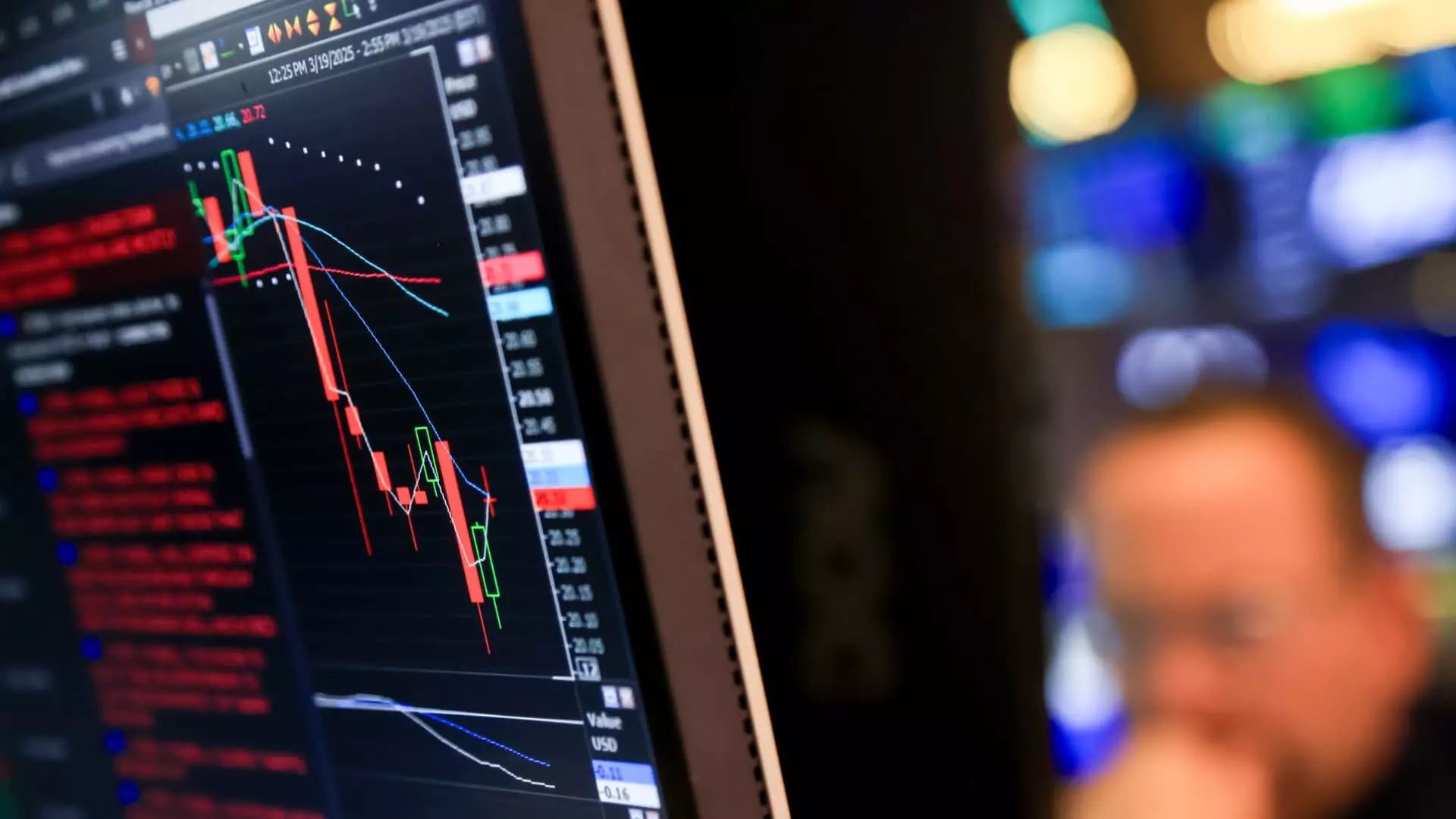In recent weeks, the venture capital ecosystem has faced a seismic shift. This turmoil comes on the heels of a multitrillion-dollar stock market decline, amplified by the clouds of uncertainty cast by President Donald Trump’s announcement of reciprocal tariffs on several nations. The venture capitalists who thrive on the cyclical nature of financial markets are now finding themselves under unprecedented pressure. With initial public offerings (IPOs) and mergers and acquisitions (M&As) dwindling, the already strained environment grows more ominous as startups remain in a prolonged phase of private ownership, foregoing the chance to go public. The result? A stagnating landscape that threatens the very viability of many established VC firms.
The reality is stark: venture capitalists primarily depend on public exits to cash out on their investments. When market conditions are hostile—a condition exacerbated by tariffs—investors get jittery. Companies like Uber and Spotify have raised funds at explosive valuations, but for emerging firms pondering their IPO paths, the risk associated with dipping stock markets cannot be underestimated. In this unstable climate, the overwhelming sentiment is one of hesitation; a reluctance to take the plunge into public markets where valuations are at risk of dropping as rapidly as they previously surged.
Private vs. Public Markets: A Growing Divide
The dynamics of private markets, which lack the liquidity and responsiveness of public ones, are becoming more pronounced. Private companies are now isolated from the swift evaluations dictated by the stock market. Venture capitalists like Tobias Bengtsdahl from Antler emphasize that fluctuations in public marketplaces don’t immediate alter the valuations of private startups. Yet, this contradiction puts immense pressure on startups trying to raise new rounds of equity funding.
Unlike early-stage startups, which operate independently of market trends due to their relatively lower capital needs, later-stage companies find it increasingly difficult to secure financing. Risk-averse investors are far less likely to engage with businesses that might face valuation downgrades. The implications of this rift suggest that growth-stage firms are now walking a tightrope, fully aware that the slightest misstep may hinder their access to necessary funds just as they are on the cusp of growth.
Expectations of a Backlash: The Effects of Limited Options
The pressure to ensure exits weigh heavily on general partners, whose responsibilities extend beyond the operations of the fund to the expectations set by limited partners. This cycle is fraught with challenges. For pension funds or institutional investors seeking substantial returns, a failure to exit can result in financial shortfalls that ripple back to the investors themselves. The very investors who support these VC funds have legitimate anxieties about the ability of their backers to meet capital benchmarks, which directly threatens the foundation of trust these funds rely upon.
However, there could be a silver lining, as suggested by firms like Northzone. The potential downturn in U.S. opportunities may serve as a catalyst for companies to adapt and thrive in other regions—specifically Europe, where a burgeoning tech ecosystem is emerging. If European startups can capitalize on U.S. departures, we may witness a renaissance of innovation that is not only localized but provides a resilient alternative to the uncertainties beckoning from across the Atlantic.
The Rise of Europe’s Technology Landscape
Amid this disarray, there lies a fascinating chance for European tech companies to step into the limelight. Individuals like Christel Piron, CEO of PSV Foundry, have illustrated that founders are not merely choosing to remain within European borders; they feel a newfound responsibility to contribute to a more robust tech infrastructure amid global instability. This development could usher in a pivotal evolution, as Europe collectively strives to build its own tech narrative while U.S. enterprises grapple with adversities.
The exodus of talent and capital could very well redefine international markets. If tech workers and startups perceive the U.S. environment as less hospitable, they may channel their resources into creating systems that bolster the continental tech network. The temptation to exit for better opportunities isn’t merely a market diversion; it represents a critical juncture that may cement Europe’s position as a formidable tech hub.
Will Markets Stabilize in Time?
As the waiting game continues, the ultimate question revolves around whether the IPO market can recover under the current administration. Venture capitalists are pinning their hopes on the potential for an uptick in tech IPOs, leading to an environment in which they can finally realize the investments they have nurtured over the years. With hindsight indicating that patience might be necessary, the looming question is whether patience can indeed pay off in this turbulent landscape.
While a casual observer may view the current state of venture capital as lacking direction, the reality is much more intricate. The stakes are high, the expectations are seismic, and the uncertainties are rife with potential. The next few months could be critical for thousands of startups, thereby impacting broader market sentiments. In a world characterized by volatility, the navigational skills of venture capitalists will be put to the test as they grapple with these intricate complexities.

